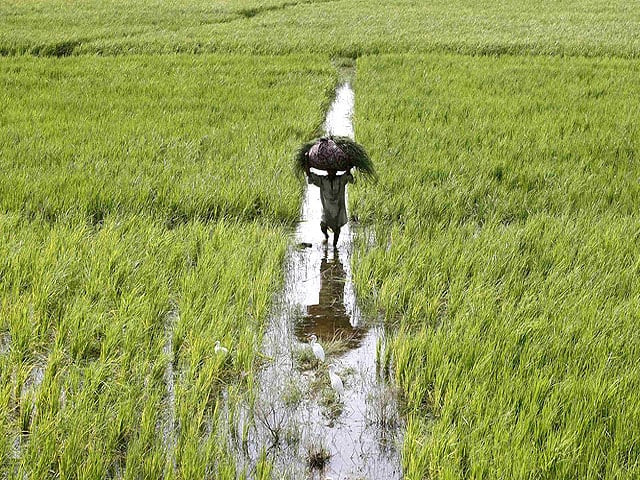Agricultural credit falling short of demand
Institutions continue to allocate minimal resources to this key sector.

According to the Economic Survey of Pakistan 2009-10, total agricultural credit disbursements have increased from nearly Rs45 billion in the fiscal year 2000-01 to more than Rs166 billion in 2009-10.
Despite such increase over the past decade, the net share of agricultural credit in Pakistan’s total formal-sector credit portfolio was only 4.5% at the end of the year 2009-10. This is hardly reflective of agriculture’s contribution to national economy.
Growth in the supply of agricultural credit has also fallen behind the growth in its demand during the last decade. The demand-supply gap stood at about Rs280 billion in 2009-10 and the supply of institutional agricultural credit during the fiscal year 2009-10 fell short by more than half of the demand according to the State Bank estimates. The continued shortage of institutional credit has led to increased farmer reliance on the informal credit market.
The informal credit market is completely unregulated and offers rates of interest that are usually much higher than those prevalent in the institutional credit market. State Bank estimated that the interest rates in the informal credit market vary between 50-100 per cent.
Over the years, commercial banks have emerged as the major source of institutional agricultural credit. Their share stood at 68.4% in 2009-10 compared to 29.4% of the Zarai Taraqiati Bank. Financial statements reveal that agriculture does not feature as a priority sector in the credit portfolios of major financial institutions.UBL allocated the highest share of its credit portfolio (14.09%) to agribusiness followed by HBL (6.44%), NBP (5.01%), MCB (0.98%) and ABL (0.18%).
The reluctance of commercial banks to extend credit to the agricultural sector is reflected in both the dwindling share of agriculture in sector-wise credit provision and the widening gap between demand and supply of institutional credit. The disinclination of commercial banks to expand their agri-credit portfolios is largely due to concentration of banking operations in urban areas, collateral issues emerging from an archaic land tenure system and lack of information on demand and supply. Rigorous research of the rural credit market is warranted to highlight the continued negligence by the major market players as well as to help them work through some of these obstacles.
The writer is a Research Associate at the Agricultural Research and Advocacy Centre in Lahore
Published in The Express Tribune, August 8th, 2011.



















COMMENTS
Comments are moderated and generally will be posted if they are on-topic and not abusive.
For more information, please see our Comments FAQ